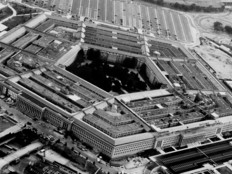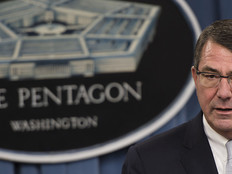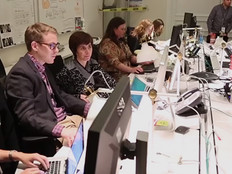Air Force Launches Its Own Digital Service to Troubleshoot Software Issues
The Air Force is following other service branches and government agencies and is standing up its own digital services team. The move is geared to make IT operations more agile and help the Air Force overcome technological hurdles.
Earlier this month, outgoing Air Force Secretary Deborah Lee James announced the creation of the Air Force Digital Service, which will partner with the Defense Digital Service at the Pentagon. James called the AFDS her own “nerd cyber SWAT team,” echoing a phrase that has been used by DDS team lead Chris Lynch to refer to the DDS and the Army Digital Service, which outgoing Army Secretary Eric Fanning unveiled in mid-December.
“This is going to be a small team of people to help us build software excellence into new programs and troubleshoot existing programs that run into difficulties associated with software,” she said at an Air Force Association Breakfast in Washington, D.C., according to FedScoop. “Software is frequently at the root of many of our difficulties.”
Building the Air Force Digital Service
Like the DDS, the AFDS includes a unique team of industry experts who have signed up for brief “tours of duty” lasting six to 12 months. The goal is to bring in IT industry experts to improve and help troubleshoot strategic or challenged projects before returning to the private sector. Members currently supporting DDS have worked for a variety of technology-driven organizations, including Google, Shopify, Capital One and other tech firms, the Air Force notes.
James said at the event that she was able to see firsthand what the DDS was capable of when it worked on OCX, the Air Force’s next-generation GPS operational control system.
“OCX ran into some problems in part because we had collectively underestimated the level of software complexity and the cybersecurity that the project would require, so we brought in these experts,” she said, according to FCW.
The DDS is building the new system “to better withstand malicious hacks and become a more accurate navigation technology used by billions of people, both civilian and military.” DDS says it is working onsite alongside the contractor, Raytheon, to stabilize and speed up development of the project.
Lt. Gen. Arnold Bunch, the military deputy for the Air Force’s office of the assistant secretary for acquisition, said the service branch is compiling a list of programs the AFDS will work on, but that there is currently no official timeline for when the list will be ready, according to Federal News Radio.
The AFDS is looking to hire about 10 people in the coming months, FCW reports, and the OCX program will be its main focus, at least initially.
“So we’re going to now be putting this approach to work to ensure that future programs are designed with an eye to the necessary cyber requirements and building the expertise we need to use the latest private-sector techniques,” James said, according to FCW.
Building on Previous DOD Efforts
Last month, the Army’s Fanning and Lynch announced the creation of the Army Digital Service, which expects to hire about 20 tech experts in the next few months, FCW notes.
“We have an almost unlimited target set of problems where we want some help,” Fanning said at a kickoff event in New York City, according to Federal News Radio. “I know the other military services are talking about doing the same thing because there’s so much potential in this model in an area where we have so much to do. What we can guarantee you is that you’ll be working on projects around an incredible mission, and you will have a significant impact, and you’ll have impact quickly and noticeably.”
Outgoing Defense Secretary Ash Carter launched the DDS in November 2015 to bring in tech experts to tackle the DOD’s complex IT problems.
Last spring, the DDS rolled out its Hack the Pentagon “bug bounty” program, which used vetted “white hat” hackers to probe public DOD websites for security vulnerabilities.
Hack the Pentagon ran from April 18 to May 12. More than 1,400 hackers were invited to take part in the program, which was so successful that the DOD plans to use it in other areas of its security. More than 250 participants submitted at least one vulnerability report, and 138 of those vulnerabilities were determined to be “legitimate, unique and eligible for a bounty,” Carter said last year.
The DDS is also involved in other Pentagon programs, including its collection and reporting of data on sexual assault and updating the DOD’s outdated Defense Travel System application.
The DDS itself is modeled on the U.S. Digital Service, a team of digital fix-it wizards that the White House stood up to repair HealthCare.gov in 2014. The USD — a group of engineers, designers, writers, product managers, researchers and procurement experts that is focused on enhancing the delivery of federal services through digital technology — has been one of the clearest examples of how the Obama administration has changed the federal government’s approach to IT.









